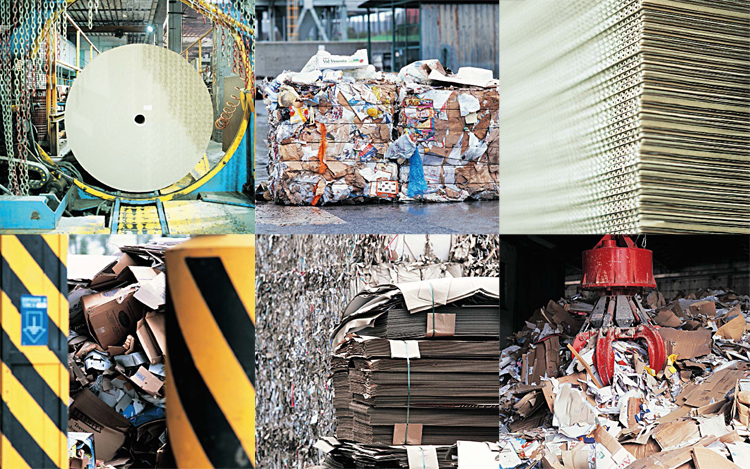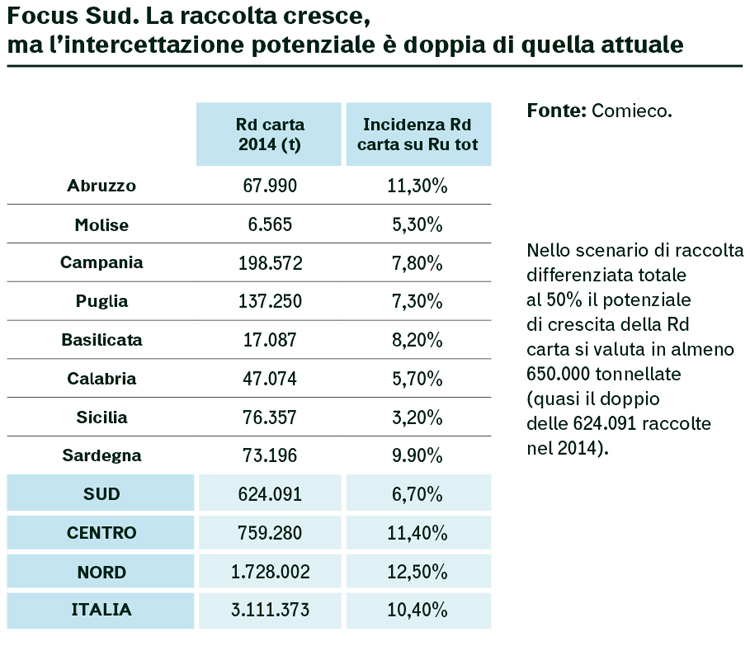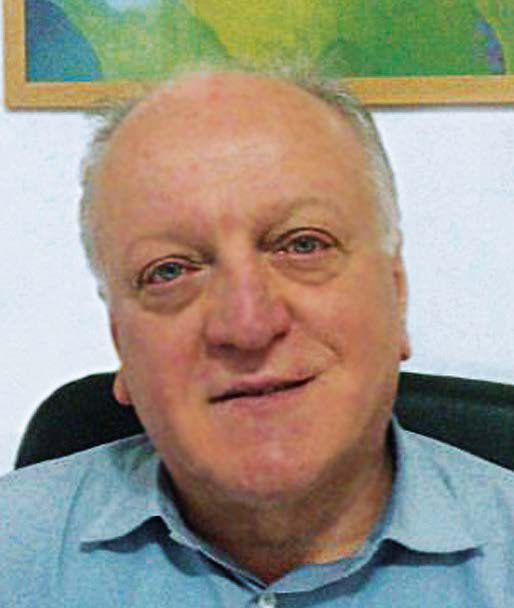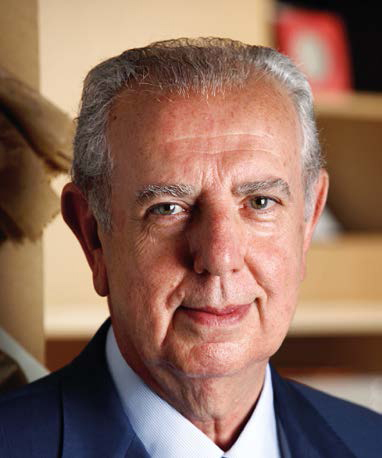Municipal solid waste sorting is increasing in Italy. There has been a constant, significant increase over the past ten years, or rather in the 2005-2014 period. Furthermore, according to ISPRA (Italian Institute for Environmental Protection and Research) data valid in 2016, we went from 24% to an excellent 47.5% of national production, with a further increase of 2% compared to the previous year. What is more, in view of a 0.4% reduction in municipal solid waste production, 29.5 million tonnes of municipal urban waste were produced in 2015, i.e. an overall drop of almost 1.9 million tonnes compared to 2011 (ISPRA data, “Rapporto Rifiuti Urbani 2016”).
The North is leading sorted waste collection, with 8 million tonnes, representing 58.6%, while Central Italy has reached almost 2.9 million tonnes collected (43.8%).
While, on the one hand, these numbers lead us to believe that the 50% mark by 2020, as requested by the European Directive 2008/98/EC, is attainable, on the other, they show the South’s serious delay. Even today only 33.6% of waste, equal to 3.1 million tonnes (an ever-increasing figure), is collected and sorted.
“In order to reach the 60% municipal solid waste recycling objective by 2025 (and 65% by 2030) recycling performances will have to improve throughout the South,” writes Italy’s Foundation for Sustainable Development in its “La raccolta differenziata dei rifiuti urbani nel Mezzogiorno: i ritardi e le proposte per superarli e per raggiungere i nuovi target europei” dossier, presented in November 2016 during the Stati Generali del Sud meeting to discuss the matter of sorted waste collection in the South. “Exceptional efforts will have to be made in the 5 regions which are lagging behind because they are way off the required results and, if the trend of the past ten years does not radically change over the coming years, we will be off in a certain direction, a long way off those objectives.” Molise, Calabria, Basilicata, Puglia and Sicily are the flip side, not only in terms of reaching a satisfying level of sorted waste collection, but also in terms of the creation of an extensive, functional sorting and treatment system, which would lead to an increase in investments and employment.

Paper and Cardboard at the top of Sorted Waste Collection
If we have a look at the data, we can see how sorted and treated municipal solid waste, after biodegradable waste, is formed by paper and cardboard. “In most of North and Central Italy, the collection of sorted paper and cardboard, which, historically along with glass, was one of the first activated in Italy. That is why, with the exception of Liguria, the growth margins are not very large,” explains Roberto Di Molfetta, head of the COMIECO (Italy’s National Consortium for the Recovery and Recycling of Cellulose-based Packaging) recycling and recovery area. “The reports from recent years show that we have many cities, in particular in the North, that, in terms of paper and cardboard, have almost reached the limit of what they can possibly intercept. Yet, there are several municipalities, more often than not in the South and in Central Italy, where the level of collection is still low. That is why COMIECO has devised the Piano per l’Italia del Sud (plan for southern Italy) – specifically to recover the amounts of paper and cardboard that end up in with unsorted waste.”
If we take a look at the most recent data gathered by COMIECO in its 21st annual report on paper and cardboard collection, the South emerges with the best results: +4% in 2015, equal to 26,000 tonnes, compared to the previous year with 31.5 kg collected per capita. 21% of the total of paper and cardboard waste sorted in Italy comes from the South, while in 1998, when the COMIECO system was set up, the figure was 5%. This increase was confirmed in 2016 too: +20,700 tonnes in the first semester (or rather, a 9% increase compared with the previous year), with the “families” collection the driving element with 140,000 tonnes (+10.1%).
“The big challenge is to develop a real ‘families’ collection in the South,” underlines Di Molfetta. “The missing volumes come from collection from family units. This is due to a significant gap in terms of collection: in many cases, there is no equipment, they do not collect regularly, they use waste disposal practices which do not follow official channels.” This organisation deficit often leads to badly implemented, often multi-material collection. “The quality of the material collected is fundamental, because this is the first step of a process which ends with powering a paper mill to make new paper. But the more the material presents foreign bodies, the more it needs to be processed and cleaned. And so, the whole process ends up costing much more, not to mention the further production of unsorted waste,” continues Di Molfetta.
Constant Improvement, Additional Limits
According to COMIECO, the growth potential for paper and cardboard sorted waste collection can be evaluated at 650,000 tonnes a year, at least. If we evaluate these figures in economic terms, as returns and lower disposal costs, the value is around 100 million Euros a year. Around three quarters of these quantities come from family collection. The figure reaches more than 60% in Campania and Sicily. That is not all. As Italy’s Foundation for Sustainable Development underlines: “Compared to 2014, the additional 800,000 tonnes to be recycled in 2025 would lead to an increase of around 1,4000 workers for the paper and cardboard industry, in addition to another 400 workers in 2030 needed to recycle 190,000 additional tonnes in order to reach the objective set for 2030. Overall, by 2030, the increase in employment in the South, determined by the objectives reached, would be around 1,800 employees in the paper and cardboard sector.” A crucial factor for this growth will be the rationalisation of services that are still missing in action in countless small-scale, short-term contracts and assignments.

The “Piano per l’Italia del Sud” and its Tools
In order to reach these results, the “Piano per l’Italia del Sud” has up to 7 million Euros at stake which are a downpayment for the collection payments. This sum may be used for interventions aimed at consultancy and support for project evaluation and identifying collection objectives, up to 50% for economic support for purchasing equipment and means, in relation to collection objectives defined beforehand and for specific communication actions. Until today, at least 16 projects have been activated, or are underway. These involve more than 1.7 million inhabitants, with downpayments of around 5 million and objectives for reaching 60,000 tonnes of new collected waste.
That is not all. Thanks to the agreement between COMIECO and ANCI (Associazione Nazionale Comuni Italiani), in 2016, the national call for tenders for municipalities with collection deficits was renewed, allocating three million Euros to 98 municipalities (93% to the South), intended for all the administrations with collection results below 30 kg/inhabitant and a population of up to 100,000 units. Since 2014, COMIECO has contributed to boosting paper and cardboard sorted waste collection in around 200 municipalities, using 4.5 million Euros in resources to purchase 760,000 bags and boxes, 220,000 bins, 33,000 wheelie bins, 3,700 dumpsters, 25,000 waste paper bins and 800 roll containers for shops.
However, there are still some difficulties, connected mainly to planning the collection. “Once the project has been identified, the step which is perhaps most complicated is finding a company to put it into practice. This (problem, editor’s note) increases where services organised at municipal or supramunicipal level are lacking,” explains Di Molfetta. “Often, unfortunately, the activation times of a call to tenders are very long. In Sicily, we are able to support municipalities such as Siracusa and Ragusa, but we are awaiting the conclusion of the process for identifying the waste collection service manager.”
The Cases that Work
Of course, there is a South that works, thanks to specific projects and structural interventions. Like the one set up in Naples, involving a basin of 200,000 inhabitants, with two new vehicles made available and 7,500 new containers for the collection. This investment of 1.35 million Euros aims to increase city collections by 4,500 tonnes.
Or like the “La via del cartone” initiative set up in Palermo in December. Along with RAP (Risorse Ambiente Palermo), COMIECO involved 610 commercial users, clothes shops, bookshops, hardware stores and more, in 24 streets where a specific collection service did not yet exist. “We set up a daily collection service which comes by at the end of the day. RAP arrives to collect just the cardboard, before the unsorted waste,” says Di Molfetta. The users involved in the experimental project are positive about the initiative which has an average daily increase from 800 to 1,300 kg. According to CONAI (Italy’s National Packaging Consortium) data, recycling paper and cardboard packaging has allowed the secondary raw material generation equal to 329 million reams of A4 paper. This is a sign that the circular economy means, first of all, savings in resources and energy.
“La raccolta differenziata dei rifiuti urbani nel Mezzogiorno: i ritardi e le proposte per superarli e per raggiungere i nuovi target europei” dossier, tinyurl.com/zzzbwk2
21° Rapporto “Raccolta, Riciclo e Recupero di carta e cartone 2015,” tinyurl.com/zhadbtl
Info

Interview with Edo Ronchi, chairperson of the Foundation for Sustainable Development
Edited by R. B.
“We need a political vision and an operational capability”
In October, the Foundation for Sustainable Development presented its “La raccolta differenziata dei rifiuti urbani nel Mezzogiorno: i ritardi e le proposte per superarli e per raggiungere i nuovi target europei” dossier which examines the current delays and provides several solutions for overcoming the waste management impasse in the South.
A significant delay in sorted waste collection emerges from the figures presented in the report for southern Italy. What is needed?
“Regulations are the same nationwide. At least three southern regions are doing well, for example, Sardinia has exceeded 50%, Campania and Abruzzo are gaining on these figures. So, I would say, the situation is not the same all over the South. There remains only the regional and municipal administrative delays, in terms of both political vision and the operational and managerial capability of the waste sector. It is the administrative industry which does not work.”
Your report presents at least ten proposals for making up for the delays. How would that work?
“We have submitted these proposals to the Ministry of the Environment. We wish to implement an agreement involving CONAI and the southern regions and develop central support. We want to verify the pre-existing system and management plans, improve the quality of the collection already occurring and conduct an educational and informative campaign in these regions. I also believe specific, focused pilot projects are fundamental and may act as an example for other cities.”
If implemented well, the circular economy brings a whole series of benefits, not only in terms of employment.
“Sure. And this also applies to biodegradable waste. However, the industry it is connected to, which is the most undervalued industry in these five regions, requires an adequate system for powering industrial sectors, such as biomethane and green chemistry production. In Italy, the circular economy is already developed and we can extend it to the southern regions, creating sound employment, investment and development chances.”
www.fondazionesvilupposostenibile.org

Interview with Piero Attoma, chairperson of COMIECO
Edited by R. B.
Paper and cardboard collection boosted in over 120 municipalities
With an allocation of 7 million Euros, the “Piano per l’Italia del Sud” launched by COMIECO aims to incentivise waste collection in the South, by buying new equipment but also by reorganising the service.
While, in the North and Central Italy, the percentage is substantially unchanged, the South has the most growth potential. Is that right?
“Precisely. In 2016, the South reported almost 10% in growth (double compared to 2015) in paper and cardboard waste collection. But we still have a lot to do. If we were to correctly sort all the paper and cardboard which can be intercepted, we can recover more than 6,000 tonnes of materials which still end up with unsorted waste.”
What is the “Piano per l’Italia del Sud,” sponsored by the Ministry of the Environment?
“It is a COMIECO project, developed along with CONAI and the Ministry of the Environment, devised to incentivise paper and cardboard sorted waste collection in the South through purchasing new equipment and public communication and awareness-creating campaigns. COMIECO has allocated 7 million Euros to support 8 southern regions: Abruzzo, Basilicata, Puglia, Campania, Calabria, Molise, Sicily, Sardinia. The agreements signed in several regional capitals have lead to, for example, in Palermo’s neighbourhoods, 200 new dumpsters with a view to collect 2,100 tonnes more in paper and cardboard over 18 months and placement of a further 70 dumpsters in 2016. In Messina, resources have been allocated in order to expand door-to-door collection in two neighbourhoods and boost the service in the commercial circuit throughout the municipality. As well as this intervention, waste collection in public administration offices and schools has been developed. Along with CONAI, in the context of reorganising the collection service, COMIECO has allocated 79,000 Euros for the equipment used in cellulosic material collection to Catania and 100,000 Euros for purchasing equipment necessary for boosting the waste collection service in Catanzaro. In Naples, a supplementary agreement between the municipality and ASIA (Azienda Speciale per l’Igiene Ambientale, editor’s note) for the development of paper and cardboard sorted waste collection with funding equal to 1.4 million Euros and the objective of collecting 9,000 tonnes more by the end of 2017. In Bari, finally, 14 bin lorries specifically for cardboard and paper took to the city’s streets to spread awareness among the public about correctly sorting paper and cardboard waste.”
What are the most important problems that COMIECO has to face in these regions?
“The delay is not due to a single industry’s problems, but to difficulties in the organisation and management of sorted waste collection as such. We need to identify the most effective strategies for some parts of the South necessary in order to change the pace. Paper and cardboard waste collection can be an important driving factor in this development because that public agreement between local bodies and industrial sectors is consolidating around it. This involves those that are called to implement effective local policies regarding the collection service, as well as those, operating through respective recovering and recycling industries, who are responsible for guaranteeing the collection of that collected and the use of the secondary materials in their own productive cycles.”

